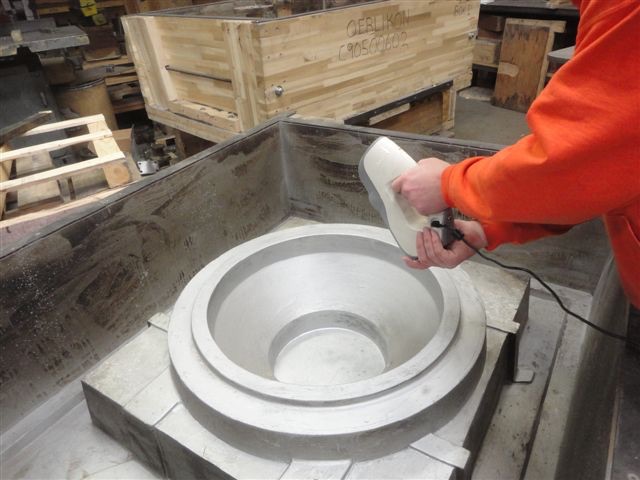How one foundry uses “crazy efficient” Artec Eva to slash up to 75% off production time, cut losses, and more
This content was originally written and published by the Artec 3D team on their website. Reproduced here from this link.
Summary: Willman Industries, a full-service jobbing foundry, had been using an older 3D laser scanner mounted on a robotic arm for scanning their castings. That had to change.
The Goal: To use a lightweight, high-precision handheld 3D scanner (Artec Eva) for scanning castings on-site, across the foundry, as well as for tooling analysis, pattern and mold scanning, reverse engineering, and problem-solving.
Tool Used: Artec Eva
It’s always great to get testimonials from industry pros who have enhanced their performance thanks to Artec scanners. One such company is Willman Industries Inc., a Wisconsin-based full-service jobbing foundry offering design, pattern making, heat-treating, and machining. Willman purchased an Artec Eva from one of our U.S. partners, Exact Metrology.
Willman was already familiar with the benefits of 3D scanners as they were looking to upgrade from an older laser scanner and Faro’s arm. Efficiency working with large castings up to 30,000 pounds was the benefit that sold them on the Eva, says Steve Young, the owner of Exact Metrology.
“With the larger castings, the [Artec] scanner can be taken to the casting rather than having to move the casting to where the scanning arm is,” explains Dana Green, an account manager at Exact Metrology. “That along with the large field of view allows for faster capture rates compared to that of the arm and scanner. Additionally, the accuracy tolerances are well within Eva’s capabilities.”
Since its purchase, says Randy Parker, Willman’s quality manager, the Eva has been in use practically every single day in some capacity or another. Parker estimates the Eva has been instrumental in QA on approximately 50 jobs so far, “working out well beyond expectations.”


“We’ve made numerous improvements to our process with it. Our dimensional control has improved not just from measuring the castings but from checking multiple process inputs with the Eva,” Parker says.
Dimensional control is carried out to determine if the quality of castings meets expected values by comparing the data captured with the scanner against known CAD files. This also helps with issues that can come up during the casting process such as core shift. The Eva captures data at an accuracy level well within the confines of the needs for the castings, demonstrating a higher speed of capturing the larger castings, along with a higher speed of data processing.
“Using an arm and laser scanner could take hours to scan a large casting, add to that the processing of the large data sets and it may take a day to get results,” says Green. “With Eva, the casting can be captured in less time and provide processed results faster, thus allowing faster feedback on the production process to maintain quality.”
According to Parker, Willman Industries have greatly expanded the primary use they bought Eva to include tooling analysis, pattern and mold scanning, reverse engineering, and problem-solving.
Problems such as uneven cooling can be encountered within casting scenarios, leading to production errors. With the faster data capture and measurement results, Parker can see errors in portions of casting that can only be attributed to uneven cooling. This helps adjust production methods, resulting in lower production losses in time and materials.
Parker says he knew the Eva would help supply layout castings more rapidly but is amazed at the actual pace – some tasks are accomplished in 75 percent less time. He cited some castings that historically would have stretched over a period of seven to 10 days now being finished in six to 10 hours.
Parker refers to Eva as “crazy efficient,” adding, “The rate at which you can capture data is fantastic.”
“Without a doubt, the Eva has saved our company money,” says Parker. “We definitely promote it to customers as a valuable tool that will enable us to meet their castings’ requirements.”
To know more, please check Artec 3D.









